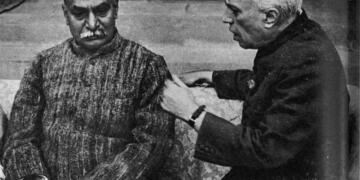On February 26, 2019, the Indian Air Force executed a historic, unprecedented action that rang out a clarion call to the world: India harbors zero tolerance against terrorism and shall strike back firmly with the utmost precision! It was in retaliation against the dastardly Pulwama terror attack, claiming lives of 40 of its men of the Central Reserve Police Force. The strike not only smiled with revenge in honor of the martyrs but, more importantly, it demonstrated India’s militarily superior capabilities and strategic foresightedness.
Tribute to the Martyrs of Pulwama
It was on Valentine’s Day, February 14, 2019, that a cowardly terrorist attack in Pulwama, Jammu and Kashmir, claimed the lives of 40 brave CRPF men. The attack was perpetrated by the Pakistan-based terror outfit Jaish-e-Mohammed with the ultimate aim of destroying India itself. But India had an assured, prompt response, where Modi government made it clear that this time the culprits would pay. Reportedly, he told the officials that “Jawab toh dena padega” (We need to give a response), paving the way for an unprecedented aerial strike deep inside Pakistan.
6 years ago, India struck terror at its roots in Balakot. When the enemy retaliated, Wg Cdr Abhinandan Varthaman stood fearless in the face of capture. His bravery echoes India’s spirit—unshakable and proud. #BalakotAnniversary #BalakotAirstrike pic.twitter.com/LG8ykXAOKH
— Indian Army in Jammu & Kashmir (@IndianArmyinJK) February 26, 2025
Operation Bandar: A Masterstroke by the Indian Air Force
In the early hours of February 26, 2019, at approximately half past three, twelve Mirage 2000 fighter jets from the Indian Air Force crossed the Line of Control (LoC) and attacked the biggest JeM training camp in Balakot, Pakistan. This was the first Indian aerial offensive into Pakistan since the 1971 war and, thereby, marked India’s preparedness and capability to retaliate firmly against terror threats.
The mission, codenamed Operation Bandar, was meticulously planned and executed. The IAF jets dropped precision-guided bombs on the terror camp, wiping out a large number of terrorists, their trainers, and senior commanders. In a way, the operation was not only an homage to the Pulwama martyrs but also a notice to those who sought to harm India.
India’s Air Warriors Prove Their Mettle
Through the Balakot airstrike, the high technical skill of the honed pilots of the Indian Air Force, their audacity and professionalism, stood out. By flying deep into enemy territories while avoiding radar detection and hitting targets with uncanny accuracy, the IAF proved its dominant role in aerial warfare. The mission showed off India’s enhanced airpower and highlighted magnificently strategic use of the Mirage 2000 jets and precision-guided munitions.
The operation also revealed the failure of Pakistan in countering such an offensive. Although Pakistan claimed such attacks were averted, it turned out wrong with no supportable evidence coming from Pakistan, which was followed by the panic of their security structure. The IAF outclassed and outfought its opponent with a shrewd and courageous strike.
The Diplomatic Victory: Abhinandan’s Heroic Return
The next day, Pakistan made a futile attempt to respond by sending in fighter jets into Indian airspace. In that ensuing dogfight, IAF Pilot Wing Commander Abhinandan Varthaman engaged. Though his MiG-21 Bison was shot down, Abhinandan managed to shoot down a Pakistani F-16 before ejecting himself and landing in the enemy territory.
Abhinandan’s capture by Pakistan placed tremendous international diplomatic pressure on Islamabad. Through its unwavering resolve and assignments, India ensured the safety of Wing Commander Abhinandan and secured a diplomatic victory in the process. Pakistan was compelled to release him within just 60 hours—that being a huge diplomatic win for India. As soon as Abhinandan crossed back over to India at the Wagah border, the country came alive in an intriguing celebration that underscored India’s strength not just in warfare but also in diplomacy.
IAF jets bombed JeM terror hubs across Balakot, Muzaffarabad & Chakoti, a fitting response to Pulwama. Terrorism will never be tolerated. #BalakotAirStrike #NoMercyForTerror pic.twitter.com/nFKroiHOFX
— ZainakotOlives (@ZainakotOlives_) February 25, 2025
India’s Message to the World
The Balakot airstrike was a definite turning point in India’s war against terrorism. It reinstated India’s doctrine that terrorism will not remain unresponded to and that India has the military means and political will to take revenge when provoked. The successful completion of Operation Bandar established the Indian Air Force in the world as one of the most formidable powers.
Moreover, the global public noticed India’s move, with many nations asserting India’s right to self-defense. The strike also acted as a deterrent and proved that India was willing and capable of taking definitive action beyond its borders when national security is endangered.
The Balakot airstrike was not merely retaliatory action. It was a declaration of Indian sovereignty and a demonstration of military prowess. It signified that India was a nation that respects its armed forces, guards its boundary, and is willing to take any step necessary in the interest of self-defense and for protection of its sovereignty by taking the battle into enemy territory when warranted. With Wing Commander Abhinandan’s return, India’s diplomatic skills once again have had the better of Pakistan, yielding to international sentiment.
The Balakot Airstrike, will remain in the annals of history as the day when India impossibly revenged its valor, proclaiming its arrival—ready to defend its people and honor, whatever the cost—on the world stage.





























